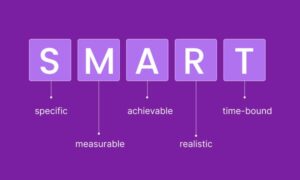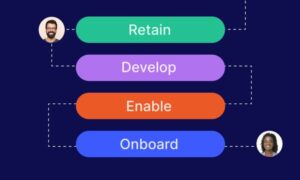50 most important questions for a beneficial employee feedback survey


In companies all around the globe, people are so buzzed with having to finish projects for clients on time and within budget that there are a few things we all tend to overlook.
Yes, the famous time-budget-quality triangle is crucial to a company’s success. But what makes a business tick? What makes their organization world keep turning, the same as the earth?
People.
That’s right. It’s their people that make sure those projects are done in a timely and affordable way. The people that add high quality and finesse to each product or service that goes out.
As an HR manager, have you ever thought about how quickly employees’ feedback can (and in some cases should) change the course of the way your business runs?
Moreover, does your management team know who these employees really are? What drives them to work every day? What keeps them up at night? What have they done behind those desks that have really steered your organization to success?
It’s a lot to think about. But believe me, it’s so worth the time. According to a recent study by LinkedIn, 69% of employees have said they are willing to work harder if they knew that their efforts were better acknowledged by their managers. What?
Yes, employees are out there looking for feedback and recognition in order to do their jobs better. This is not just a large percentage – it’s a major call-out for help.
It’s time businesses look to invest in not just their clients and their products and services – but also their people.
In this article, we’ll be discussing the importance of employee feedback surveys and how it contributes to overall employee engagement in the workforce. We’ll also share the 50 best questions to ask in employee surveys so that you get the most useful feedback – feedback you can use to implement change in your business.
Here’s a breakdown of what we’ll discuss:
1. What is an employee survey?
2. Why is it important to conduct an employee feedback survey?
3. How employee surveys build healthier employee engagement
4. Things to consider before conducting a survey
5. Getting started: how to ask the right employee survey questions
6. Types of survey questions
7. The most important employee feedback survey questions to ask
8. How to implement your surveys
Intrigued?
Let’s jump straight to it!
What is an employee survey?
An employee survey is essentially a questionnaire that is designed to retrieve reviews and opinions from employees. The survey questions evaluate an employee’s level of satisfaction, morale, degree of motivation, and level of engagement within the company.
Certain questions can also show an employee’s achievements and their willingness to grow long-term with your business. Effective employee surveys help HR departments, managers, and other employees understand any strong areas of the business as well as areas that need improvement.
Improvement can pertain to business processes, performance measurement, or soft skills like employee-manager communication.
Why is it important to conduct an employee feedback survey?
Surveying employees is often seen as a tradition instead of an opportunity for the HR department and management.
It goes beyond being just a tradition. Surveys help businesses understand the intelligence that employees have from the ground up. Working with clients, using chosen software and systems, and dealing with challenges every day means that employees know the most about the business.
Surveys are an act of compassion from an employer. It shows that you care about your people and their well-being in their positions. After all, your employees spend a large percentage of their lives with their co-workers and managers. It’s time to show them an elevated level of thoughtfulness. After all – their feedback is vital to the success of your organization.
How employee surveys build healthier employee engagement
Employees work best when they feel proud of their work, content in their workplace, happy to work with their team, and feel empowered by their managers. This is essential for all aspects of employee engagement.
What is employee engagement?
Employee engagement is an emotional state where employees feel energetic, passionate, and dedicated to their work. If they feel a tremendous amount of positivity and commitment toward their work, employees will fully invest their minds, bodies, and spirits in their day-to-day tasks.
How can employee surveys help improve employee engagement?
Most businesses believe that having a quarterly or annual performance review is enough to understand an employee’s strengths and pain points.
Agree?
If you do – think again.
Employees actually feel a little more reluctant to be 100% truthful in performance reviews. Let’s think about that for a second.
It does make sense. If your manager is inviting you to an annual performance review – chances are that they’re going to critique you and you will probably receive or not receive a bonus or annual increase based on your answers.
So, you as an employee would want to be as careful as possible with your answers and not tip the apple cart too much. Honestly – everyone wants that raise come performance review season. Unfortunately, it comes with employees being timid and not always as candid as they would want to be. In addition to this, quarterly or annual meetings are not timely, so workers’ problems today may not be heard until a few months’ time – not an ideal solution for employees.
How can you fix this?
Employee feedback surveys! Doing ad hoc employee surveys is essential to collecting valuable information from your team as often as possible. Employee surveys are always done individually, and if you use an effective employee feedback survey software, your employees can answer questions privately.
Things to consider before conducting a survey
Your organization may have certain employee review or feedback templates at the moment. It’s not uncommon to have this. Often businesses follow their personalized documentation that is derived from their processes and rules.
The trick as an HR manager is to find the balance between keeping your business rules top of mind while still being able to create new documentation that will better uplift employee engagement levels.
Here are four essential items to check before you share a survey with employees:
1. Create goals for your survey
Use the SMART (specific, measurable, achievable, realistic, time-bound) goal framework to define exactly what you aim to achieve with this survey. An example would be: Increase employee interest in leadership development from 60% to 70% over the next year.
2. Define the frequency of your survey
Some companies prefer to do surveys annually. Others weekly. The frequency of your survey is something that is entirely up to you. When you choose your frequency, remember to include sufficient time to plan and create the questions and upload it to a tool for sharing the questionnaire with your employees.
3. Use a reliable employee survey tool
An easy-to-use and measurable employee survey tool from Juno can help you build out questions in software and share them with your employees in minutes. This way, you can spend more time crafting effective questions rather than toying with technology trying to get a survey launched in time. Effective survey tools also allow you to capture and measure results from employees. Say goodbye to counting out survey responses and collating the results in Excel.
4. Keep your survey private
Employees tend to be more honest when they are responding to surveys anonymously. Try to keep surveys as private as possible and allow employees sufficient time to answer them. This way, workers can take as much time as they need to answer truthfully and without their co-worker next door peeking at their answers. Confidentiality is key here – you want to give employees the privacy they need so that they can be as honest as possible for you.
Getting started: how to ask the right employee survey questions
The toughest challenge with getting feedback surveys to employees frequently is having to create them often. Defining the questions and ensuring that they’re designed to bring back valuable commentary is essential.
What is a worthy survey question?
A worthy survey question is one that gets you clear and easily understandable information. This information should include insights about the business and your customers.
Worthy questions should help you understand any strengths, weaknesses, opportunities, or threats (SWOT analysis) pertaining to your:
- Product or service
- Price of your offering
- Target markets (current and potential)
- Current customer profiles
- Competitor landscape
- Potential customers that don’t convert
Ask better questions – get better answers
The truth is, if you craft the right questions, you’ll get good insights back from your team. But how do you do that? Here are a few tips for creating powerful questions in your next survey:
Don’t babble
Keep your questions short. People don’t like to read four sentences before they can answer a question. Shorter questions are easier to understand and keep the flow of the survey going.
Don’t be ambiguous
Avoid bringing up two subjects in one question. Keep them as separate questions so that their minds are focused on only one subject when workers answer. Even if the two subjects are related – keep them as standalone questions.
Don’t use language to imply a specific answer
Keep away from using words like ‘great’ or ‘well-rounded’ when speaking about someone or something in the company. For example, ‘what do you think of our latest and greatest tracking software?’. This question is already implying that the software is good. It may sway an employee’s answer to the question.
By drafting worthy questions, you’ll better understand the current landscape from your employees and improve business processes, product development, and customer experience all-round.
Types of survey questions
Open-ended questions
These questions give employees enough freedom to write an answer back to you by using their own words. Their answers are not limited to selecting a pre-drafted response in the survey (e.g., a multiple-choice or rating scale answer).
Use open-ended questions when:
- You want to learn more about a system, process, or experience that you never really speak to employees about.
- You want to hear from employees about specific weak points in a given area of the business. By closing the end of the question, you may be removing any opportunity for information sharing on sensitive or challenging topics.
Open-ended questions are great for getting more information from an employee. But remember not to use too many of them in one survey. People may get lazy and respond with just a few loose words instead of giving you good feedback – just because they’re tired of typing.
Example of an open-ended question:
What other valuable analytics tools would you like to see us use in the future?
Closed-ended questions
These questions can come in a variety of forms and are used very often in surveys. They include ‘yes’ or ‘no’ questions, rating scale questions, nominal, and Likert questions. Let’s review these questions in more detail:
Direct ‘yes’ or ‘no’ questions
When a user has to answer a question with either ‘yes’ or ‘no’, it’s the easiest and most painless way to respond. You want to be sure that you’re using some of these, but not too many as they close any opportunity for explanation.
Use this type of question when you want to tally up how many employees had a positive versus negative experience using a specific tool or process. You can review every one that had been negatively impacted and later follow up with them as to why their experience wasn’t a good one.
Example of a ‘yes’ or ‘no’ question:
Was the software training useful? (Yes/No)
Likert questions
You may have seen these before – they are a very popular type of question to use in surveys. This question is based on the Likert scale that usually ranges between 5 and 7 points. The scale asks participants to choose their level of agreement with a given statement. Likert questions may also ask for a person to choose their intensity of feeling toward something specific.
Example of a Likert question:
At work, I have the opportunity to do what I do best and what I love.
1 – No, I strongly disagree
2 – No, I disagree
3 – Neutral, I neither agree nor disagree
4 – Yes, I agree
5 – Yes, I strongly agree
Nominal questions
This is commonly known as a multiple-choice type of question. A participant can choose an answer from a selection of options available to them. The answers must not overlap and must not be numerical in any way. These questions are often used when you want to get feedback on an area that only has a few options. You can create graphical charts from them, and they are very useful for reporting on surveys to management.
Remember that you can latch on an open-ended question to the back of a nominal question by adding an answer option titled ‘other’. When an employee selects other, they can type in another answer that’s not part of your options.
Example of a nominal question:
What is your preferred method of communication with peers?
- Office telephone
- Instant messaging i.e. Microsoft Teams, Slack, or Skype
- Mobile texts
Rating scale questions
These questions are designed most commonly on a numerical scale from zero to ten. They are usually used when you want to use a rating scale and compare large numbers of results. They work well for employee satisfaction surveys.
Example of a rating scale question:
How likely is it that you would recommend your company’s products to a friend or family member?
0 – not likely at all
10 – extremely likely
Use closed-ended questions when:
You are opening the survey. Shorter and more straightforward questions are welcomed at the beginning of a survey. Employees are more likely to move on to the next question with ease if the first one is quick to answer. Keep open-ended questions for later in the survey.
The most important employee feedback survey questions to ask
Before we get into the detail of each question, it’s vital to remember a few key considerations. The purpose of surveys is to gain employee insight and build trust.
You can build trust by:
- Presenting questions to employees in a welcoming, non-intimidating way.
- Use an authentic and warm tone at the beginning of the survey.
- Ask yourself how you would feel answering the questions you have created.
In this article, we’ll discuss the most impactful employee feedback survey questions across ten categories:
1. Peer and Manager Communication
2. Benefits and Compensation
3. Employee Recognition
4. Leadership Development
5. Workplace Environment
6. Wellness
7. Work-Life Balance
8. Company Culture
9. Personal Growth
10. Career Growth
1. Peer and manager communication
Communication is the key to successful relationships between co-workers. Using effective communication helps to maintain a certain level of transparency within the company and show a culture of inclusiveness to employees.
Here are five communication questions you should use in your survey:
1. On a scale of zero to ten, how comfortable do you feel contributing your opinions and ideas in our workplace? (0 – not likely at all. 10 – very likely)
2. Do you feel comfortable asking your manager for help when you feel unfamiliar with a certain system or process?
3. Do you feel that the management team in our company is transparent with all employees?
4. Do you feel like your co-workers are respectful to one another?
5. To what level do you agree with the following statement: ‘My manager values my opinions and takes them into consideration when brainstorming new ideas.’
1 – I strongly disagree
2 – I disagree
3 – Neither agree nor disagree
4 – I agree
5 – I strongly agree
2. Benefits and compensation
Employees often feel that performance reviews and any other internal level of review and feedback should be linked to a shift in compensation or benefits. They are sometimes disappointed when they don’t receive an annual bonus or salary increase after a performance review. This can be because their managers weren’t completely transparent with them, causing distress and frustration. To avoid this and learn more about how employees feel about their compensation packages, it’s a good idea to include questions about it in your next survey.
Here are some compensation-related questions you can include:
1. On a scale of zero to ten, how satisfied are you with your current compensation package?? (0 – not satisfied at all. 10 – very satisfied)
2. Do you feel that our company is fair with the benefits offered? If no, please elaborate.
3. Would you be in favor of an Employee Discount Program which gives you special discounts on home and clothing apparel?
4. How often do you buy goods for the office and claim them back from the company?
- Weekly
- Monthly
- Every three months
- Twice a year
- Annually
5. How comfortable do you feel discussing your salary and potential salary increases with your manager?
1 – Very uncomfortable
2 – Uncomfortable
3 – Neither comfortable nor uncomfortable
4 – Comfortable
5 – Very comfortable
3. Employee recognition
Recognition is an integral part of employee satisfaction. If you feel like you should be putting 110% effort into any of these areas – recognition is definitely a good place to start. A study done by SurveyMonkey and Bonusly shows that 63% of employees who feel recognized are ‘very unlikely’ to job hunt.
This significant percentage shows that regular recognition instills trust and a sense of purpose in your employees. It is a vital part of retaining top talent and helping people grow and develop in their careers with you.
Below are five recognition questions you can use:
1. To what level do you agree with this statement: ‘I receive a good amount of recognition in this organization.’
1 – I strongly disagree
2 – I disagree
3 – Neither agree nor disagree
4 – I agree
5 – I strongly agree
2. Do you feel like you are recognized for contributions to projects within your team?
3. Would there be anything you’d change regarding how our company recognizes employees? _________
4. Do you receive recognition on special days like work anniversaries? If yes, please specify how you are recognized.
5. What are some work accomplishments and/or contributions you would appreciate being recognized for?
- Customer service
- Consistent job performance
- Innovative ideas
- Taking extra responsibilities
- Other, please describe:
4. Leadership development
There are two parts to leadership development: 1) the relationship between an employee and their leader or manager. 2) the development of an employee into a leader.
The second part of leadership development can often be overlooked and leads to employees that feel demotivated or lost about the future of their career. By upskilling and reskilling employees, you can seamlessly transition them to future leaders instead of hiring new managers. Employees understand the background of your business and can become valuable assets to a management team because of the unique perspective they’ve developed from growing within the company.
Include the following leadership development questions in your next survey:
1. Do you believe in the approach that leaders currently take in our company? If not, please specify why.
2. Do you feel that you are equipped to grow into a leader at our company?
3. Do you think managers at this organization care for you as a person?
4. Is there anything you would like the management team to change? If yes, please describe.
5. How long do you think it will take you to transition into a leader at this company?
- 5 years
- 3 years
- 1 year
- 6 months
- Not applicable – I don’t see myself transitioning to a leader here.
5. Workplace environment
Your workplace environment has a huge impact on your employees’ well-being. Having a well-equipped, clean and comfortable environment to work in is something every worker needs. It helps boost morale and keep employees motivated about the work they do for eight hours a day, five days a week.
Here are a few questions to ask about an employee’s work environment:
1. On a scale of zero to ten, how prominently do you feel office politics are in your work environment? (0 – not prominent at all. 10 – very prominent)
2. Do you feel that your workplace has a positive feel to it?
3. Do you have satisfactory amenities in your environment to feel comfortable and able at work? If no, please specify:
4. Do you feel our company is socially responsible?
5. To what level do you agree with this statement: ‘Our company is dedicated to fostering a diverse and inclusive work environment.’
1 – I strongly disagree
2 – I disagree
3 – Neither agree nor disagree
4 – I agree
5 – I strongly agree
6. Wellness
Since the recent global pandemic, mental and physical wellness has become one of the highest priorities for most businesses. Staying mentally healthy means that your body and spirit also feel energized and ready to do your best in your professional and private life. Adding wellness-related questions to your survey can help you better understand an employee’s mental state and share ideas on how to implement wellness activities in the organization.
Below are a few questions related to employee wellness:
1. On a scale of zero to ten, how important is physical and mental well-being to your company? (0 – not important at all. 10 – very important)
2. Do you think your company offers a well-rounded wellness program?
3. Do you feel energized and excited to come to work every day?
4. Do you think our company’s wellness initiatives are good enough? If not, what would you change?
5. What additional corporate wellness initiatives would you like the company to have?
- Onsite meditation
- Onsite yoga
- ‘Downtime’ spaces
- Health risk assessments
- Stress reduction tools
- Other. Please specify:
7. Work-life balance
Getting the ideal work-life balance has been a tough challenge for many workers. Often, people work very long hours when they’re younger and less experienced. As they grow, employees have other responsibilities and ambitions like having children, traveling, or working from various locations.
It’s vital that businesses keep up with the ever-changing needs of their employees and constantly stay in touch with their goals.
Include these questions to better comprehend an employee’s work-life balance:
1. Do you feel that you have enough hours in your 9 AM – 5 PM time slot to complete your daily tasks?
2. How often do you work after hours?
- Once a day
- Once a week
- Once a month
- Once every three months
- Once every six months
- Once a year
3. Do you enjoy coming to work every day?
4. If required (per project basis), are you happy to work on a weekend?
5. Do you feel like work hinders your personal time dedicated to friends and family?
8. Company culture
Company culture speaks to the heart of the business. It is why people come to work and why they stay employees at the company. In interviews, you often hear candidates say that they want to work ‘where it feels like a family’ or ‘where their bosses believe in their potential and act on it’ or ‘where the company contributes to a cause monthly’. All these statements speak to the culture that employees want to be a part of. It’s imperative that your team understands how comfortable they are with your culture and what they’d want to be changed.
Below are a few culture-specific questions for you to use:
1. Do you feel like your management team is trustworthy and transparent?
2. What three words would you use to describe our company culture?
3. Do you believe our company could improve the culture? If yes, describe how.
4. Do you feel that your executive team actively contributes to a diverse and inclusive culture?
5. Is there anything you would like to add to our culture? (This could include social events, social responsibility activities, etc.)
9. Personal growth
Having employees is a contract – yes. But they are people. They will have career goals as well as personal goals, and it’s so important to understand both. If your employee’s personal growth includes starting a small crafting business – you should support that. It doesn’t directly add value to your business, but it will boost the morale of that worker – keeping them driven to do their job and small business ventures to the best of their ability.
Add these personal growth questions for some additional insight:
1. Do you have any hobbies? If yes, please specify:
2. Other than your occupation, what else would you like to achieve in your life personally?
3. Do you feel that your company supports personal growth?
4. Do you feel comfortable sharing personal achievements with your co-workers?
5. Would you be interested in learning about co-workers’ personal goals and sharing yours with them?
10. Career growth
This last set of questions will be the defining piece of the puzzle. Career growth questions can show you where your employee sees themselves in a few years, and how willing they are to stay at your organization. It also helps you understand how invested they are with your business and how best you can help them achieve their career goals.
Here are some career growth questions to include:
1. Do you feel aligned with your company’s strategic objectives?
2. Do you feel comfortable speaking to your manager about role growth?
3. Using a scale of 0 to ten, how likely are you to want to grow your career at this company? (0 – not likely at all. 10 – very likely)
4. To what level do you agree/disagree with the following statement: ‘My manager has helped me succeed in my current position.’
1 – I strongly disagree
2 – I disagree
3 – Neither agree nor disagree
4 – I agree
5 – I strongly agree
5. Do you feel that management has a genuine interest in your career path and goals?
How to implement your surveys: it all begins with good feedback
Now that you have the most important questions to add to your next employee feedback survey, you can see that surveys hold a lot more power than just being a random tradition in companies. It’s time to evolve from being a business that sees employee feedback as ad hoc suggestions rather than key insights.
Time is always a factor. But by scheduling weekly slots in your calendar that are dedicated to creating surveys and analyzing insights, you will get a much better understanding of how the company is truly perceived by the people that spend most of their time in it.
Add your survey questions to an integrated and measurable feedback tool! If you use something like email to share a survey, you, as an HR manager, will have to spend the time collating all the results and moving it to yet another offline document. And then create reports from it manually.
At Juno Journey, we know you’re too busy for all the mundane manual work. Our state-of-the-art software is designed to help manage and measure employee feedback. Simply build out your questions in our online tool, add your employee members and share!
What’s more? Juno Journey measures the survey results and helps you create insightful reports from them. Chat with us today to learn more about how to build a sustainable survey solution quickly, safely, and seamlessly.





